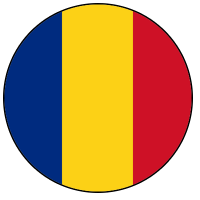The origins of football in what is now northern Romania cannot be understood without looking at the sport’s development in Budapest and in Hungary as a whole. German-style gymnastic associations sprang up in Hungarian cities in the second half of the 19th century; this coincided both with an increased prosperity in Hungary after the ‘Compromise’ of 1867, and the spread of industrialisation, which was facilitated by the extensive construction of railways. Arad, Nagyvarad and Temesvar were all connected to the Hungarian plain in the 1850s, and Kolozsvar followed in 1870. [See here for a map of Hungarian railways circa 1890.]
1897 seems to have been the first year of organised football in Hungary: the first rule book having been published the previous year, the first Hungarian football club was founded in this year. The club was part of Budapesti Torna Club (Budapest Gymnastic Club), itself founded over a decade earlier, and would be known as BTC. BTC played against Vienna Cricket and Football-Club (“Cricketer”) at the Millenaris Ground in Budapest on 31 October 1897, in Hungary’s first football match. Vienna was more advanced in its football than was Budapest; partly this was due to the far greater number of British expats in the city. Apparently there was a stylistic difference from the earliest days: Austrians played the Scottish way, ball on the ground, while Hungarians favoured a more robust kick-and-rush. In the 1897 match, Vienna’s team, which would go on to win the Austro-Hungarian Challenge Cup the following year, included eight Englishmen to BTC’s two.
Other gymnastic associations in the Budapest area opened a football arm in the next few years: Újpesti Torna Egylet (Ujpest Gymnastic Association) started Ujpest Football Club in 1899; Ferencvarosi Torna Club (Ferencvaros Gymnastic Club) (often known in Hungary as Fradi or FTC) established a football club in 1900; Magyar Testgyakorlók Köre (Circle of Hungarian Body Trainers) (MTK) began a football team in 1901. The Hungarian football association was formed in 1901, and that same year the first national championship was held. By this stage, BTC had been playing regularly against Austrian opposition for years, and a regular fixture between sides representing Vienna and Budapest was held. In 1902 this fixture began to be recognised as an official international match – the first for both Austria and Hungary.
The regions known as Transylvania (including Crisana and Maramures) and Banat, on either side of the Mures river, were part of the Kingdom of Hungary within the Austro-Hungarian Empire. Sports clubs, formed in Arad and Temesvar in the 1880s, served as fertile ground for the adoption of football, which was being spread by Swiss and Austrians throughout central Europe. Sources dispute which of these cities saw the first organised match in the region, but most agree that it took place in 1898 or 1899. One oft-repeated claim from Temesvar cites a newspaper report on 11 June 1899, announcing that the end of term at the Liceul Piarist, a Catholic school, would be celebrated with a demonstration of this new English sport. The 45-minute match finished goalless.
Football Club took on the task of organising the sport in Temesvar from 1902. In 1903 the Athletic Club of Arad was provided with a stadium by the local council; Aradi AC went on to win the regional championship in 1910 and 1911. (The Hungarian football league which had begun in 1901 consisted only of teams from Budapest. All other clubs around the country competed in regional leagues.)
In 1911 another important club, AMEFA, was formed in Arad, while 60 km away in Temesvar a railways team (Kiniszi, which would win the southern regional championships in 1914, 1917 and 1918) and a workers’ sport association were founded. By this stage, the city of Nagyvarad had an Athletic Club, among others, which would become regional champions in 1913.
Meanwhile, in the university town of Kolozsvar (Cluj in Romanian), KKAS (the Kolozsvar Commercial Academy Students’ Sporting Circle, founded in 1905) were Eastern regional champions three years running, from 1908 to 1910. They vied with Kolozsvari Torna Club (founded in 1907 as the railways team, Kolozsvari Vasutas Sport Club, and later known as CFR Cluj) for the Transylvanian title until the outbreak of World War I. Kolozsvar Athletikai Club (KAC) had established a football section in 1904. On the whole, football was a bourgeois concern in Kolozsvar, a major focus of Hungarian nation-building during this period.
Other towns spawned teams in the booming decade before the war: Turda, Salonta, Lugos, Resita, Targu Mures, Aiud, Brasov, Sibiu. But all, like their more illustrious big-city opponents, were confined to competing in regional leagues, denied the opportunity to improve by facing stronger opposition: this meant the Budapest teams, which themselves had improved rapidly thanks to regular games against longer-established Austrian opposition. Notionally, the regional champions were to play off against each other and the winner to progress to a final against the champions of the capital. On the only pre-war occasion when this game was actually played, 1908-09, the Budapest team Ferencvaros beat Kassai AC (of what is now Kosice in Slovakia) 11-0.
While football in the Old Kingdom of Romania was spread largely by foreigners living in Bucharest and Ploiesti, the sport in Transylvania and Banat was quickly adopted by locals and its growth was abetted by booming industry and an increasing working class.
Sources:
Péter, László (2014): The Genesis of Romanian Football. Social Factors and Processes behind the Game. Belvedere Meridionale XXVI (4), pp. 81–94.
Molnar, Gyozo (2007): Hungarian Football: a Socio-Historical Overview. Sport in History 27 (2), pp. 293-317.
Hadas, Miklos (2000): Football and Social Identity: the Case of Hungary in the Twentieth Century. The Sports Historian, 20 (2), pp. 43-66.
Clark, Andy (2012): Great Expectations: the Story of the Hungarian Football Team at the 1912 and 1924 Olympic Games. Hungarian Review, July, pp. 68-79.




